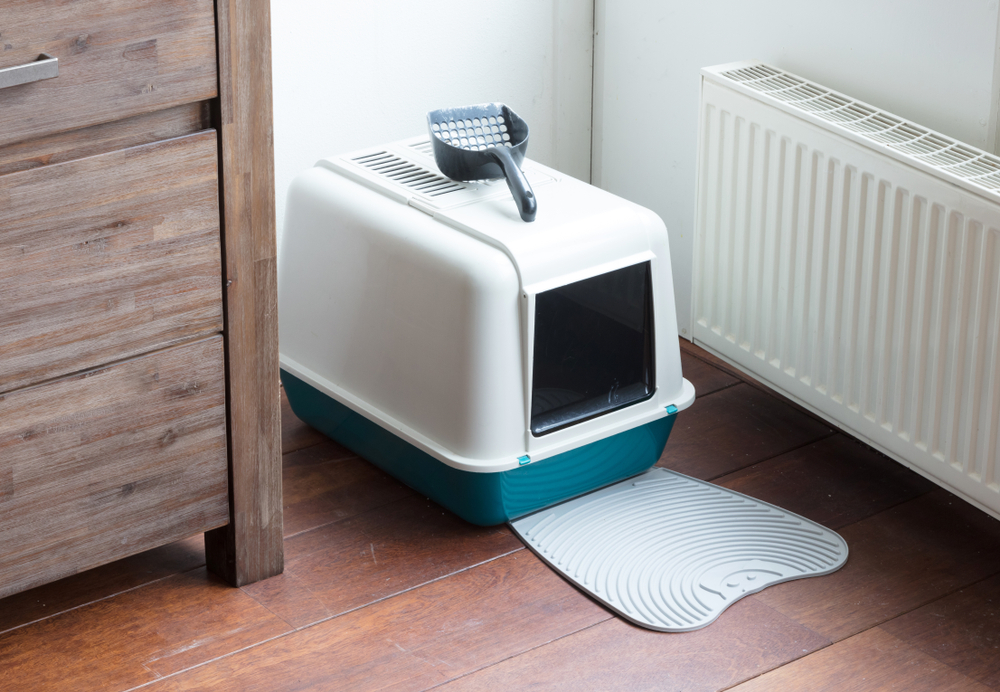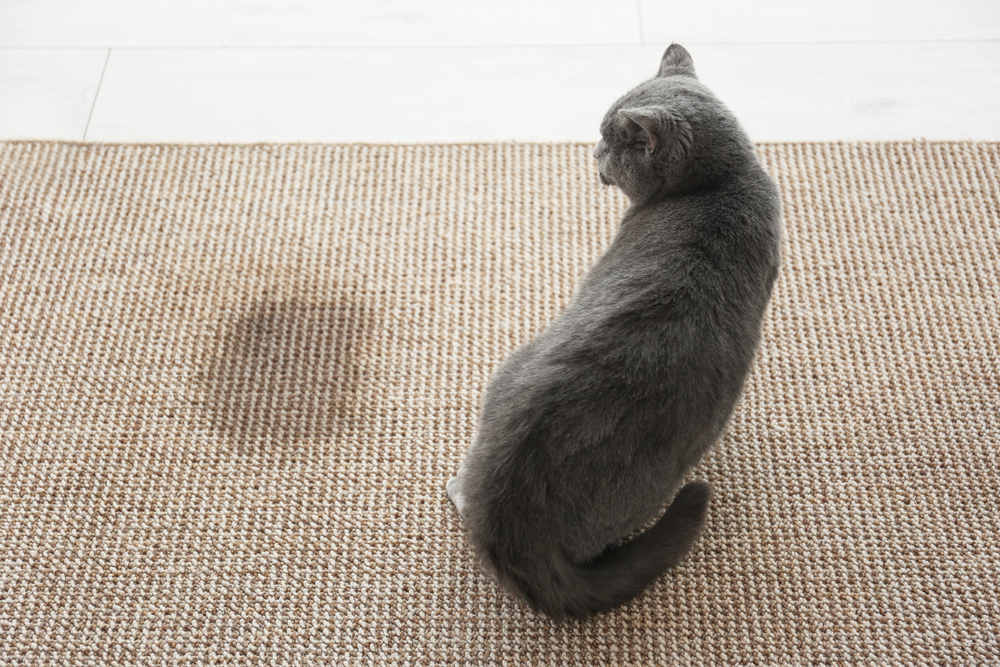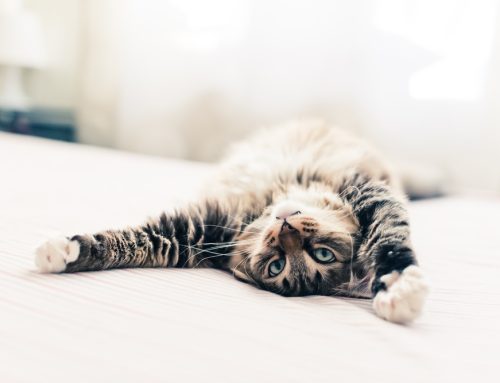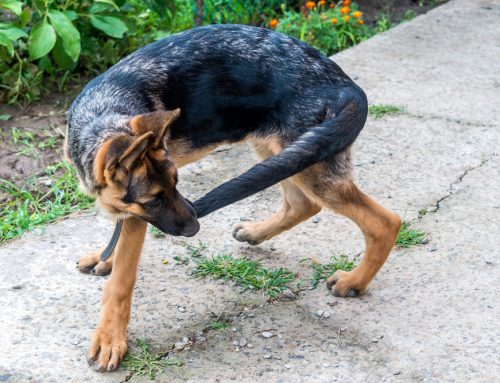If your cat is urinating outside the litter box, you’re probably feeling frustrated and wondering what you’ve done to offend them so much they need to retaliate. But your cat isn’t mad at you, and while behavioral issues may be leading your cat to urinate inappropriately, a medical condition may be the cause. Before you assume your cat is peeing inappropriately out of spite, read our Fremont Animal Hospital team’s guide to why your cat may be urinating outside the litter box.
#1: Your cat may have a health condition
Any time your cat’s behavior changes significantly, the first step is to schedule a visit with their veterinarian to rule out an underlying health condition. Any health condition that causes your cat discomfort can lead to inappropriate elimination, and the most common include:
- Urinary tract infection (UTI) — A bacterial infection can lead to a UTI, which is more common in older cats than young adults. A simple UTI can be cleared up with antibiotics, but your veterinarian will perform a urinalysis and culture to determine if an infection is the true cause of your cat’s inappropriate urination.
- Feline idiopathic cystitis (FIC) — FIC is one of their most frequently encountered urinary issues in young cats. FIC can develop without any obvious underlying cause, and more than one unidentified, underlying condition that leads to FIC is possible. While this disease’s exact cause is not always clear, stress may be a factor. Managing your cat’s stress by providing them a calming prescription diet, soothing supplements and pheromones, and anti-inflammatory products will be most effective in treating the condition, but flare-ups often occur.
- Kidney disease — Kidney disease can affect middle-aged cats, but the condition becomes more common as your feline friend ages. As kidney function decreases, they can no longer concentrate urine as well, nor can they filter out the blood’s toxins and metabolic wastes. These issues lead to excessive thirst and urination, and potential inappropriate elimination.
- Diabetes — Diabetes can affect any cat, but middle-aged, overweight felines are more likely to develop this condition. High glucose levels cause excessive thirst and urination, and unregulated diabetes can lead to your cat peeing outside the litter box.
- Arthritis — If your cat’s joints are painful, they may have trouble getting in and out of their litter box, and may seek alternative bathroom facilities. To help remedy this problem, provide your cat a box that has low sides.
#2: Your cat may be stressed
Once your veterinarian has ruled out that an underlying health condition is not causing your cat’s inappropriate elimination, focus your efforts on identifying recent environmental changes that may be causing your pet stress and anxiety. Cats are highly sensitive creatures, who do not react well to change. Inappropriate elimination is a common stress side effect in cats. Any change in your household that affects your cat’s daily routine can lead them to ditch the litter box. The sooner you identify what is causing your pet stress, the sooner you can resolve the problem. Your cat may find these events stressful:
- New litter box or new litter box location
- A new home
- A family addition such as a new baby or a new pet
- An inadequate number of litter boxes for multiple cats
- New or rearranged furniture
- Visiting guests
- A change in your family’s daily routine
#3: Your cat’s litter box may need to be adjusted

If your cat suddenly stops using the litter box, the setup may not be to their liking. Cats can be finicky regarding their bathroom facilities, and if they aren’t satisfied with their setup, they may seek other places to do their business. Litterbox factors to consider include:
- Cleanliness — If their litter box is unclean, your cat may refuse to use it and find a quiet corner or soft surface. Scoop the box at least twice a day, discarding the litter and disinfecting the box weekly.
- Location — Ensure the litter box is in an easily accessible, low-traffic area. In addition, keep the box away from noisy appliances, such as the washing machine and dryer, which may frighten your cat. If your home has multiple levels, place boxes on each level to give your cat easy access.
- Size — Ensure that the litter box is large enough for your cat. The box should be as long as your cat from their nose to their outstretched tail’s tip, and as wide as from their nose to their tail’s base.
- Litter type — Most cats prefer unscented, soft, fine-grained, clumping litter, at a depth of only one to two inches.
- Litter box quantity — Cats don’t like to share bathroom facilities, causing multicat households to have more inappropriate elimination issues than single-cat households. Ensure every cat in your home has their own litter box. A good rule of thumb is one litter box for every household cat, plus one extra.
Your cat’s inappropriate elimination is not a personal vendetta. Your cat likely needs help. If your cat is peeing outside their litter box, contact our Fremont Animal Hospital team, so we can rule out a potential health condition.






















Leave A Comment